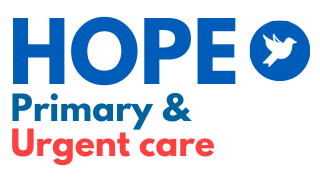Controlling High Cholesterol: Diet, Exercise, and Medical Guidance
High cholesterol, or hypercholesterolemia, is a prevalent health concern that significantly increases the risk of cardiovascular diseases, including heart attacks and strokes. While cholesterol itself is essential for various bodily functions, imbalanced levels can lead to severe health complications. Managing cholesterol levels effectively involves a comprehensive approach that encompasses dietary modifications, regular physical activity, and appropriate medical guidance. This article delves into each of these aspects to provide a thorough understanding of how to control high cholesterol and promote heart health.
Understanding Cholesterol
Cholesterol is a waxy, fat-like substance found in all cells of the body. It plays a vital role in producing hormones, vitamin D, and substances that help digest foods. However, having high levels of low-density lipoprotein (LDL) cholesterol, often referred to as “bad” cholesterol, can lead to the buildup of fatty deposits in your blood vessels. This buildup, known as atherosclerosis, restricts blood flow and increases the risk of heart disease and stroke.
Conversely, high-density lipoprotein (HDL) cholesterol, or “good” cholesterol, helps remove LDL cholesterol from the bloodstream, transporting it to the liver for elimination. Maintaining a healthy balance between LDL and HDL cholesterol is crucial for cardiovascular health. Elevated triglycerides, another type of fat in the blood, can also exacerbate the risks associated with high cholesterol. Understanding your lipid profile is the first step toward effective management.
The Role of Diet in Managing Cholesterol
Diet plays a pivotal role in managing cholesterol levels. Consuming foods high in saturated and trans fats can raise LDL cholesterol levels, while foods rich in unsaturated fats, fiber, and plant sterols can help lower LDL cholesterol and increase HDL cholesterol. A thoughtful approach to meal planning can yield significant benefits.
Foods to Limit:
- Saturated Fats Saturated fats are commonly found in red meat, full-fat dairy products, and certain oils like coconut and palm oil. These fats can raise your total cholesterol levels, especially LDL cholesterol. Reducing intake of these foods is a critical step in cholesterol management.
- Trans Fats Trans fats are often present in processed foods, baked goods, fried items, and margarine. These fats not only raise LDL cholesterol but also lower HDL cholesterol, making them particularly harmful. Avoiding processed and prepackaged foods can significantly reduce trans fat intake.
Foods to Include:
- Unsaturated Fats Incorporate sources of unsaturated fats, such as olive oil, avocados, nuts, seeds, and fatty fish like salmon, mackerel, and sardines. These healthy fats can help reduce LDL cholesterol while providing anti-inflammatory benefits.
- Soluble Fiber Foods high in soluble fiber, including oats, barley, beans, lentils, fruits (such as apples, oranges, and berries), and vegetables (like carrots and Brussels sprouts), can reduce the absorption of cholesterol into your bloodstream.
- Plant Sterols and Stanols Naturally occurring substances found in plants, these compounds block the absorption of cholesterol. Foods fortified with sterols and stanols, such as certain margarines, yogurts, and orange juices, can aid in lowering LDL cholesterol.
- Omega-3 Fatty Acids These healthy fats, found in fatty fish, flaxseeds, and walnuts, do not directly lower LDL cholesterol but can reduce triglycerides and improve heart health.
Dietary Patterns to Consider:
Adopting specific dietary patterns, such as the Mediterranean diet, which emphasizes fruits, vegetables, whole grains, legumes, nuts, and healthy fats, has been shown to improve cardiovascular health and lower cholesterol levels. Similarly, the DASH (Dietary Approaches to Stop Hypertension) diet offers a balanced approach to reducing cholesterol through low-sodium, nutrient-rich food choices.
The Impact of Exercise on Cholesterol
Regular physical activity is essential for maintaining healthy cholesterol levels. Exercise can help raise HDL cholesterol while lowering LDL cholesterol and triglycerides. It also improves overall cardiovascular health by reducing blood pressure and promoting weight management.
Types of Exercise:
- Aerobic Exercise Activities such as brisk walking, jogging, swimming, and cycling are effective in lowering LDL cholesterol and increasing HDL cholesterol. Aim for at least 150 minutes of moderate-intensity aerobic exercise per week.
- Resistance Training Strength training exercises, including weightlifting and bodyweight exercises like push-ups and squats, can complement aerobic exercise in improving cholesterol levels.
- Flexibility and Balance Exercises While these activities, such as yoga and tai chi, may not directly impact cholesterol levels, they contribute to overall fitness and stress reduction, which can indirectly support heart health.
Incorporating Exercise into Daily Life:
For those new to physical activity, starting with small changes, such as taking the stairs instead of the elevator or walking during lunch breaks, can make a significant difference over time. Consistency is key, and finding enjoyable activities increases the likelihood of maintaining a regular exercise routine.
Medical Guidance and Treatment Options
While lifestyle modifications are the cornerstone of managing high cholesterol, some individuals may require medical intervention to achieve optimal levels. Healthcare providers can assess your cardiovascular risk and determine if medication is necessary.
Common Medications:
- Statins These drugs work by inhibiting the enzyme responsible for cholesterol production in the liver, effectively lowering LDL cholesterol levels. Statins are often prescribed as a first-line treatment for high cholesterol.
- Bile Acid Sequestrants These medications bind to bile acids, prompting the liver to use excess cholesterol to produce more bile acids, thereby reducing cholesterol levels in the blood.
- Cholesterol Absorption Inhibitors These drugs decrease the absorption of dietary cholesterol in the small intestine, leading to lower LDL cholesterol levels.
- PCSK9 Inhibitors These injectable medications help lower LDL cholesterol by enhancing the liver’s ability to remove cholesterol from the blood.
- Fibrates Fibrates are primarily used to lower triglyceride levels and, in some cases, raise HDL cholesterol.
Importance of Regular Check-Ups:
Regular check-ups with your healthcare provider are crucial for monitoring cholesterol levels and assessing the effectiveness of treatment plans. Blood tests, such as a lipid panel, provide valuable insights into your cholesterol and triglyceride levels. Early detection and management can significantly reduce the risk of cardiovascular diseases.
Additional Lifestyle Considerations
Beyond diet and exercise, other lifestyle factors can influence cholesterol levels:
Smoking Cessation:
Smoking lowers HDL cholesterol and damages blood vessels, increasing the risk of atherosclerosis. Quitting smoking can improve HDL cholesterol levels and overall heart health. Nicotine replacement therapies and support groups can assist in the cessation process.
Alcohol Consumption:
Excessive alcohol intake can raise triglyceride levels and contribute to high blood pressure. If you choose to drink, do so in moderation—up to one drink per day for women and up to two drinks per day for men.
Stress Management:
Chronic stress may contribute to unhealthy eating habits, weight gain, and increased cholesterol levels. Incorporating stress-reduction techniques, such as mindfulness, meditation, deep breathing, or yoga, can support heart health.
The Importance of Regular Screening
High cholesterol often presents without noticeable symptoms, making regular screening essential. The American Heart Association recommends that adults aged 20 or older have their cholesterol levels checked every four to six years, with more frequent testing for those with a family history of high cholesterol or other risk factors.
Screening typically involves a simple blood test called a lipid panel, which measures total cholesterol, LDL cholesterol, HDL cholesterol, and triglycerides. Understanding these values and how they relate to your overall health is crucial for effective management.
Partnering with Healthcare Providers
Collaborating with healthcare professionals is crucial in managing high cholesterol. They can provide personalized recommendations based on your health status and risk factors. At Hope Primary & Urgent Care, we offer comprehensive services, including lab tests and EKGs, to monitor your heart health and guide you in managing cholesterol levels effectively.
Conclusion
Managing high cholesterol is a multifaceted approach that involves dietary changes, regular physical activity, and medical guidance. By taking proactive steps and working closely with healthcare providers, you can effectively control cholesterol levels and reduce the risk of cardiovascular diseases. Don’t wait to prioritize your heart health—schedule a visit with a trusted healthcare provider today.
For personalized care and expert guidance in managing high cholesterol, contact Hope Primary & Urgent Care. Your journey to better heart health starts here.

